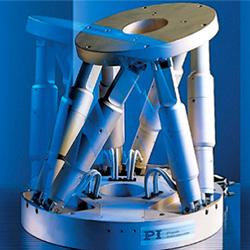No GPS, No Problem: New Google Maps and Particle IoT Integration
IoT devices with cellular and Wi-Fi can now be pinpointed even without GPS modules thanks to Particle and Google. The Google Maps API can also be used to augment existing GPS applications for faster fixes and to provide location data if GPS fails.
San Francisco, May 15, 2017 - Google Maps has just announced the integration with IoT startup, Particle. With one line of code, an IoT device has access to Googles entire geospatial database of Wi-Fi and cellular networks.
IoT devices with cellular and Wi-Fi can now be pinpointed even without GPS modules thanks to Particle and Google. The Google Maps API can also be used to augment existing GPS applications for faster fixes and to provide location data if GPS fails.
"This integration enables Particle to provide a high-value feature to any of our customers with an over-the-air software update and Google Cloud," according to Richard Whitney, VP of Product at Particle.
When IoT sensors know their location, the data is more robust, helping companies make more informed, high-order decisions. For the example of a cold chain app powered by Particle devices and Google Maps and Cloud, assets can be tracked both indoors and out. In dense urban environments GPS signals can easily be blocked by tall buildings or roofs. The Geolocation API will continue to work without GPS to continue to track your assets.
In the cold supply chain, temperature and location are key pieces of data that need to be tracked in the factory, the loading dock and in transit. These tools enable a holistic view of the supply chain and its ability to deliver a high-quality product.
When building a product on the Particle Photon, the Geolocation API creates an easy, seamless setup experience. Particle devices can then autoconfigure time zone, tune to available broadcast bands and connect to regional service providers. With those capabilities, location aware window blinds can reference the number of available hours of sunlight to know how to passively heat a room.
Google and Particle will be demoing the integration at IoT world beginning May 16th.
About Particle
Particle is a scalable, reliable and secure Internet of Things device platform that enables businesses to quickly and easily build, connect and manage their connected solutions. Particle aims to making the Internet of Things easy and accessible. Particle's tools are used by over 100,000 engineers in more than 170 countries, including Fortune 500 companies who are developing and managing fleets of new IoT products. Their portfolio includes Wi-Fi and Cellular connectivity modules, a cellular data platform, a device management console, and a comprehensive set of development tools. Particle was listed as one of Fast Company's Most Innovative Companies of 2015 and its CEO, Zach Supalla, has spoken as an authority on the Internet of Things at prominent events such as OSCON, Solid, Web Summit, GMIC, and Launch.
Featured Product

PI USA - High-Speed Hexapod for Nanopositioning
To meet industrial demands for higher dynamics, reliability and precision in 6DoF positioning systems, PI engineers came up with a new hexapod concept, based on direct-drive lever actuators. This new concept reduces complexity, improves performance, and minimizes wear.
